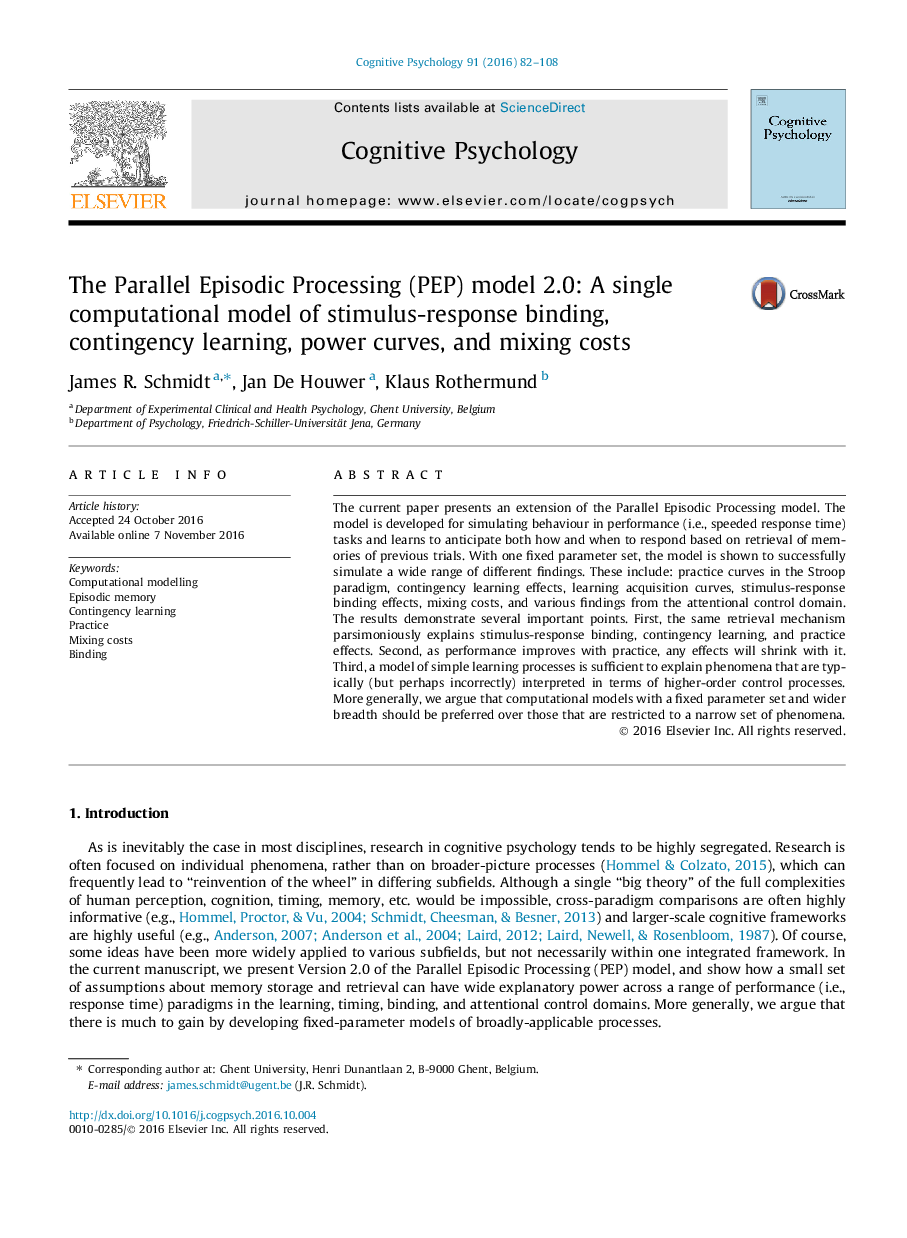| کد مقاله | کد نشریه | سال انتشار | مقاله انگلیسی | نسخه تمام متن |
|---|---|---|---|---|
| 5039731 | 1473373 | 2016 | 27 صفحه PDF | دانلود رایگان |

- We present Version 2.0 of the Parallel Episodic Processing (PEP) model.
- The model learns when and what to respond based on episodic memories.
- We simulate practice curves, contingency learning, binding, and mixing costs.
- The model also simulates various so-called cognitive control phenomena.
- Episodic encoding and retrieval impact a broad range of performance paradigms.
The current paper presents an extension of the Parallel Episodic Processing model. The model is developed for simulating behaviour in performance (i.e., speeded response time) tasks and learns to anticipate both how and when to respond based on retrieval of memories of previous trials. With one fixed parameter set, the model is shown to successfully simulate a wide range of different findings. These include: practice curves in the Stroop paradigm, contingency learning effects, learning acquisition curves, stimulus-response binding effects, mixing costs, and various findings from the attentional control domain. The results demonstrate several important points. First, the same retrieval mechanism parsimoniously explains stimulus-response binding, contingency learning, and practice effects. Second, as performance improves with practice, any effects will shrink with it. Third, a model of simple learning processes is sufficient to explain phenomena that are typically (but perhaps incorrectly) interpreted in terms of higher-order control processes. More generally, we argue that computational models with a fixed parameter set and wider breadth should be preferred over those that are restricted to a narrow set of phenomena.
Journal: Cognitive Psychology - Volume 91, December 2016, Pages 82-108